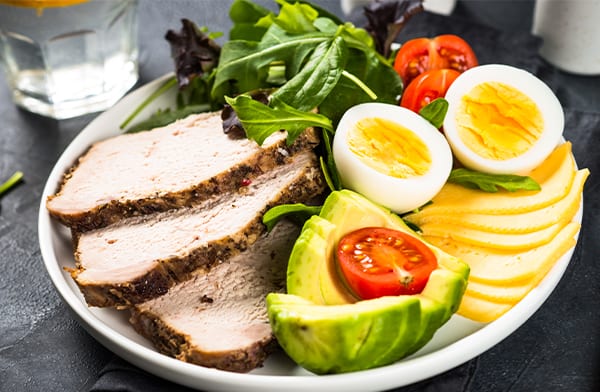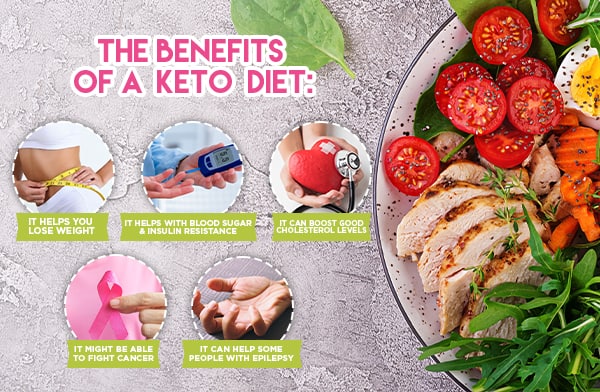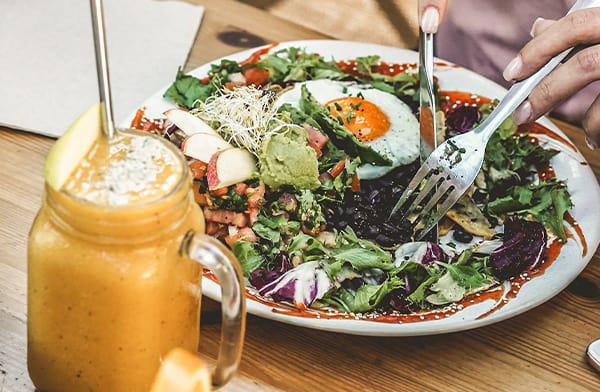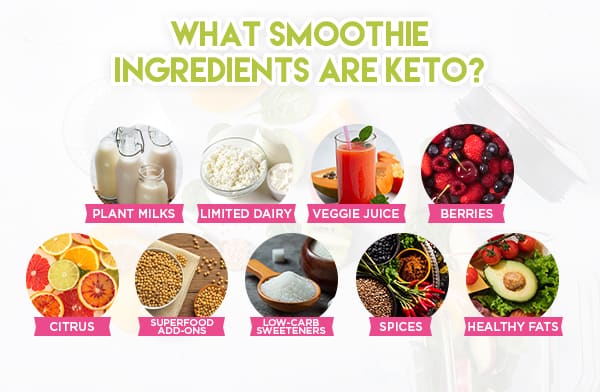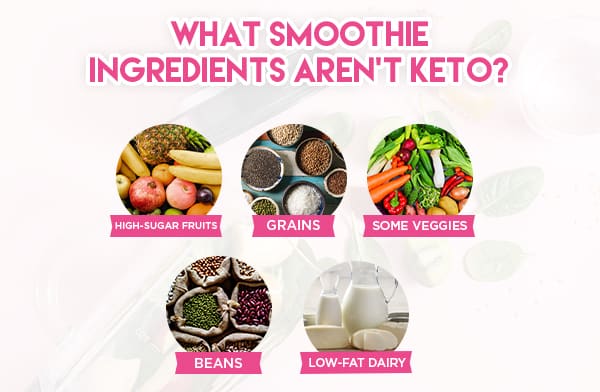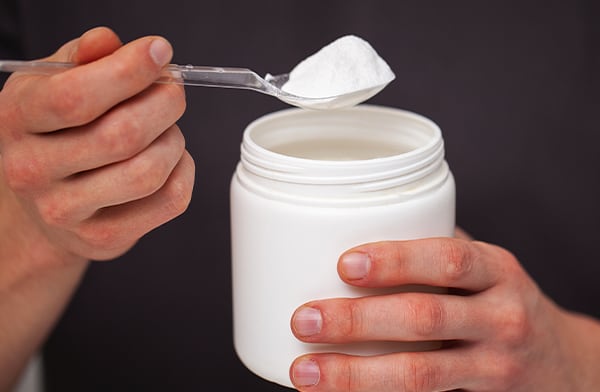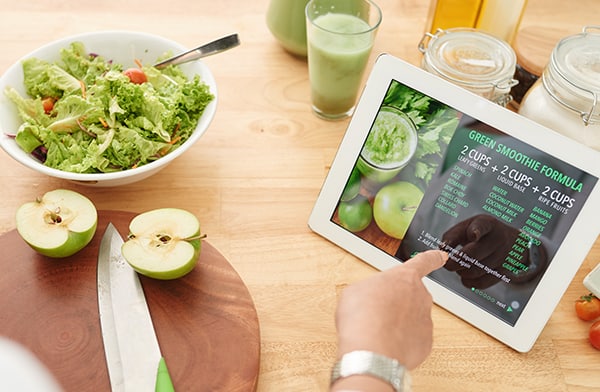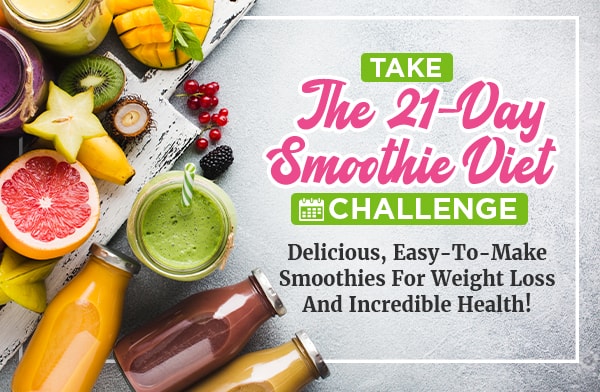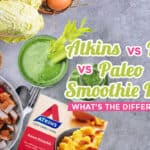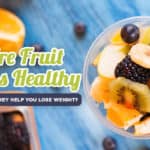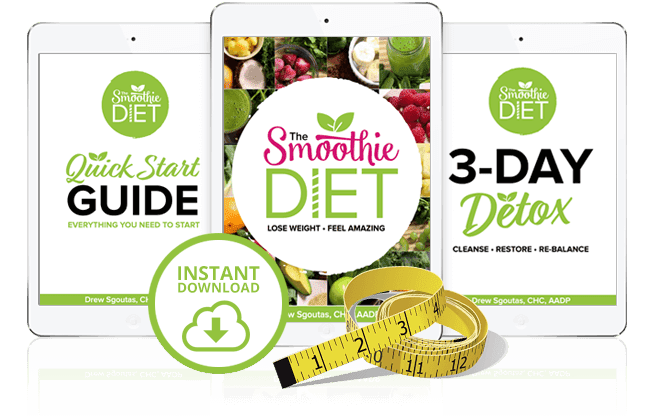FAQ: Can I Drink Smoothies While on A Keto Diet?
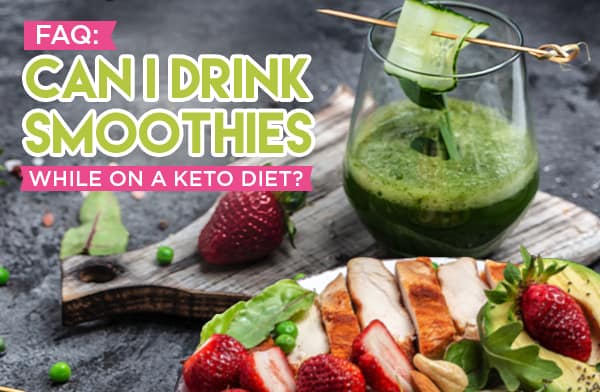
Many people have asked me how smoothies fit in with the keto diet. Can smoothies be keto-friendly, or will they break your diet? I’ve put together the most common questions that I see, and I’ve done my best to answer them here for you.
The keto diet, in particular, is surprisingly compatible with smoothies. Since keto is low-carb, all you need to do is make sure your smoothies are low-carb as well. You don’t need to cut carbs out entirely, after all.
Read on to learn more!
What Is the Keto Diet?
To start off, let’s talk about what the keto diet really is.
There’s a popular image of the keto diet out there. People often think it’s all about loading up on protein and fat. People melt butter into coffee, put bacon on everything, and risk dying if they’re in the same room as a cracker.
The truth is, this image is far from accurate. The basic overview is correct! Keto is high in fat and low in carbohydrates. Atkins, another popular low-carb diet, is sort of like a stepping stone to keto. Keto is similar to Atkins but with stricter limitations on carbs.
Carbs aren’t bad for you! In fact, your body needs carbs to function properly at all. Carbs are an essential part of your bodily functions and are required to give your body energy, feed your gut biome, and more.
Too many carbs, especially simple carbs like sugar, is bad for you. Your body stores excess carbohydrates as fat; to use that energy later, like a battery. Except, if you keep eating more carbs, you never burn that stored energy.
There’s also all kinds of evidence that carbs like sugar hurt your body in many different ways. Diabetes is one consequence of too much sugar, for example.
If you want to read a more detailed rundown of carbs, how they can be good and how they can be bad, I wrote a primer over here. Check it out! You might learn something you didn’t know about carbs.
So, back to Keto. Keto is a low-carb, high-fat diet, as I already said. It relies on forcing your body to enter ketosis, the biological process where your body burns fat for energy instead of carbs. Basically, you stop charging that battery and start draining it, losing weight in the process.
There are actually a few variations on keto.
- Standard. This is a typical keto diet, where you keep your carbs under 10% of your diet.
- Cyclical. This is an on-and-off keto diet where you adhere to keto for five days a week and use carbs to refuel the other two days.
- Targeted. This keto version allows higher carbs when you work out and burn them immediately.
- High Protein. This is a keto diet with lower fat but higher protein than standard keto.
Most people are going to be sticking with a standard keto diet.
In a keto diet, you cut down on carbs to 10% or less of your diet. At the same time, you count calories and make sure you’re getting enough nutrients. Keto people often need supplements or a carefully planned diet to make sure they get all of their micronutrients, vitamins, minerals, and so on.
What Are the Benefits of a Keto Diet?
Keto has a lot of fantastic benefits if you can stick with it.
Here are just a few of the benefits:
- It helps you lose weight. Ketosis is fat burning, so by restricting your diet such that your body has to draw on stored fat for energy, you lose weight.
- It helps with blood sugar and insulin resistance. Flooding your system with carbs increases insulin resistance, which causes diabetes. Keto may be able to reverse pre-diabetes and lower blood sugar levels.
- It can boost good cholesterol levels, reducing your risk of heart disease.
- It might be able to fight cancer. It’s not a cancer cure, but it may be able to help slow some cancers or reduce the risk of developing them.
- It can help some people with epilepsy. In fact, keto was originally used primarily as a way to treat and minimize seizures.
Keto isn’t entirely new, but it’s only in the last few years or so that science has really started to dig into studying it. I expect that we’ll learn a lot more about how it works, what it can treat, and how to use it effectively within the next decade.
Are Smoothies Keto-Friendly?
Let’s tie this back into smoothies, shall we? Are smoothies keto-friendly?
The answer is; yes and no. It all depends on the recipes you use.
There are some great keto-friendly smoothie recipes. And, there are a lot of recipes that are too high in carbs to make a good keto treat.
Some smoothies eat up your entire carb budget for the day or close enough. Some might be too high-carb for a strict keto diet. Others have low or no carbs in them and are perfectly acceptable for keto people. It all comes down to the ingredients you use. So, let’s talk about the ingredients!
What Smoothie Ingredients Are Keto?
This is not a comprehensive list, but it’s a good place to start. As long as you’re using these ingredients and staying away from the ingredients in the second list, you’ll be well on your way to keto smoothies.
Here’s a few ingredients that you can use as building blocks
- Plant milk. The traditional go-to is almond milk for keto smoothies, but you can also use coconut milk, macadamia milk, flax milk, soy milk, cashew milk, pea milk, or hemp milk. Other plant milk works too. Just make sure you’re using unsweetened milk; sweeteners usually add carbs.
- Limited dairy. High-fat yogurts, kefir, and some other forms of dairy work. Just avoid the sweetened milk or milk with a ton of lactose in them since lactose is a sugar carb. Heavy whipping cream, surprisingly enough, works well.
- Veggie juice. Juices like celery, cucumber, and mixed greens all work well. They have a lot of fiber, which is a carb, but it’s a carb you don’t digest much of, so it’s still a low-carb option.
- Berries. Raspberries, blackberries, strawberries, blueberries, and other berries can work as low-carb options. Just don’t add too many; they DO have some carbs in them, just not as much as other fruits.
- Citrus. While citrus juices you find in stores are loaded with added sugars, fresh-squeezed citrus can be fine. It still has some natural sugar, but not as much as other fruits. Lemon, in particular, is quite good at this purpose.
- Superfood add-ons. A lot of the seeds and mix-ins you find for smoothies are great low-carb options. These include chia, flax, and hemp seeds, coconut, spirulina, chlorella, matcha, and wheatgrass, among others.
- Low-carb sweeteners. If you want your smoothie to be sweeter but don’t want to use sugar because it’s a carb, you can try out sugar alternatives like xylitol, erythritol, or monk fruit.
- Spices. Spices like cinnamon, nutmeg, mint, and cocoa powder (just the powder!) are all low-carb flavorings that go great in smoothies.
- Healthy fats. Avocado, nut butter, and MCT oil are all good fats to add to a smoothie to make it more keto-friendly.
There’s more out there too. And, in fact, you can drink smoothies on a keto diet as long as you don’t drink a ton of them. Your goal is to keep your overall carb intake low, so as long as you calculate what your intake is, you should be fine.
What Smoothie Ingredients Aren’t Keto?
While I just said that smoothies could be keto no matter what’s in them, it’s still better to avoid certain ingredients so you can stay low-carb more easily.
These ingredients include:
- High-sugar fruits. Most fruits are high in natural sugars, which unfortunately need to be avoided on keto. Try to steer clear of apple, grape, banana, date, peach, mango, pineapple, and pear. Citrus tends to be fine, and berries are alright in moderation.
- Grains. Most grains aren’t going to be smoothie ingredients, but if you like to thicken your smoothies with oats, you’ll want to avoid that and pick something new.
- Some veggies. Most of the worst veggies aren’t smoothie ingredients, like potatoes. You’ll also want to avoid things like sweet potatoes and carrots. Most veggies are fine in smoothies, though.
- Beans. I’ve recommended beans in smoothies before as an alternative to bananas, but if you’re trying to stay keto, you’ll want to avoid them both.
- Low-fat dairy. Low-fat dairy, like skim milk, lacks the fat you want and tends to be higher in sugar to compensate. It’s the anti-keto milk.
For the most part, however, smoothie ingredients tend to be fine on keto. The biggest issue is that keto will limit the kinds of fruits you can add to your smoothies. If you tend to prefer smoothies with nut butter, earthy flavors, vegetable bases, and spices, you’re going to be fine.
Do I Need Protein Powder to Make a Smoothie Keto?
Keto is high in protein and fat, but does that mean you need to add those to your smoothies to be keto?
No, not at all.
In actuality, the right smoothie recipes are high enough in protein and fat on their own that you don’t need to add more. If you want to add anything, healthy fats like avocado or MCT oil will do plenty.
I tend to recommend that you avoid protein powders, in fact. Protein powders are often packed with artificial sugars and flavors, plus other additives that you might not want to be drinking with your smoothies. They can leave you hungrier, too, especially if they have caffeine in them.
If you want to get more protein in your diet, adding some protein powder to a smoothie can work, but you don’t have to. It’s an option, and I suggest that you leave it to people who have carefully calculated what their macronutrients are and determined they need more protein; if that’s you, great! If not, don’t worry about it.
If anything, you might consider adding healthy fats to your smoothies. My favorite substitution is to use avocado in place of banana. It cuts down a lot on the carbs and sugars you get from the fruit while adding more healthy fat from the avocado.
What Are the Best Keto Smoothie Recipes?
There are a ton of different smoothie recipes out there. Rather than try to list them all for you here, I’m going to link to a bunch of recipe compilations.
If you have a favorite smoothie recipe and it fits the keto diet, feel free to leave it in the comments, too. I love to hear from my followers!
- Healthline’s 10 Best Keto Smoothie Recipes – Healthline is usually a pretty good resource for health topics. They always cite their sources for medical claims, they don’t make claims that can’t be verified, and they’re self-consistent. This list of recipes gives you a great place to start and can be mixed up with other ingredients and replacements to give you more variety.
- Four Recipes from Blender Authority – The four recipes on this page are pillars of various styles of smoothies. You have the green smoothie, the avocado smoothie, the breakfast berry smoothie, and the protein smoothie. These are more “keto” and less generic smoothies, so if that’s your goal, go for it.
- Shape’s Keto Smoothie List – There are six smoothie options on this list that you can try out. They range from a green mint-coconut smoothie to a chai mixture that promises to be delicious.
You can also check out my SmoothieDiet program. This program has plenty of smoothie recipes in it, though they aren’t all engineered to be keto specifically. Armed with the knowledge of what ingredients to avoid and substitute, you should be able to customize any troublesome ingredients. And, if you run into an issue, let me know! I’d be happy to help.
What about you? Are there any ingredients that I haven’t listed that you’re currently using for your keto diet? Be sure to leave a comment down below and share your experiences! In addition, if you ever have any questions or comments about the SmoothieDiet program or anything else smoothie-related, feel free to comment down below as well!

